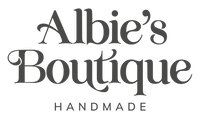The Ultimate Guide To Choosing The Best Harness For Your Dog

When it comes to walking your dog, finding the right equipment is essential for comfortable walks for both of you. But with so many options to choose from, you may be wondering whether to opt for a collar or a harness…. And if a harness, which kind is best?!
Dogs are all different, there isn’t a one-size-fits-all. But by the time you’ve finished reading this, you should have a much better idea of what dog walking accessory to pick for your dog.
Let’s explore your options so you can find the best harness or collar for your pooch.
Harness vs collar
You may have read that a harness trumps a collar every time, but ultimately your dog will be the decider on that front!
Typically, a dog who pulls on the lead will benefit from a harness as it will remove pressure from their throat and neck when they pull. It’s not only potentially damaging for your dog but uncomfortable for you trying to hold on to the lead when all your dog’s strength is pulling against a collar.
A harness distributes the pull more evenly, putting less pressure on both of you.
Some dogs absolutely hate wearing a harness - it’s not unheard of for dogs to run away when the harness comes out or to visibly brace when it goes on.
A step-in dog harness may solve this, as it doesn’t go over the head, which is what some dogs struggle with.
Alternatively, a collar is absolutely fine (and we have some mighty beautiful ones!). If your dog walks nicely on the lead then a collar is a comfortable way for you both to enjoy your walks together.
Dog Collar Pros and Cons
Let’s take a closer look at the pros and cons of choosing a collar for your dog.
Pros
- Cheaper than a harness (handy for puppies who grow fast or fashionistas with a big wardrobe)
- Easy to adjust
- Easy to put on and take off
- Different styles to suit different breeds - for example martingale collars for sighthounds and wider fit for stronger breeds
- Legally required in the UK (along with an ID tag)
- Soak up less mud and dirt
Cons
- Can apply pressure to dogs throat when pulling
- Doesn’t distribute pressure evenly across dog’s body
- Dogs can slip a collar if not fit correctly
- You may develop an addiction and become a collector (this dog storage solution will help!)
Dog Harness Pros and Cons
There are lots of different types of harnesses (more on that in a mo). First, let’s explore the pros and cons of choosing a harness for your dog.
Pros
- Distribute force evenly across the chest and shoulders, reducing strain on your dog's delicate neck area
- Often better for brachycephalic breeds and dogs with respiratory problems
- A well fit harness is harder for a dog to slip out of or escape
- More comfortable for dogs with sensitive necks or breeds prone to tracheal collapse.
- Improved control walking dogs who pull
Cons
- Can be harder to get on and off
- Typically more expensive than a collar (more fabric and time consuming to make)
- For dogs with longer coats, can lead to tangled fur
- Harder to clean when coated in mud!
- Can be tricky to get a good fit initially (contact us for help with this)
Types of dog harness
If you’ve decided on a harness for your dog, then it pays to consider the different types of harnesses available before buying. There are lots on the market and they are not created equal!
- Step-in harness
- Over-head harness
- Back clip harness
- Front clip harness
- Dual clip harness
Step In Dog Harness
Step-in dog harnesses are great for dogs who don’t like having their harness put on. They step into the harness rather than having it put over their head which many dogs find preferable.
Overhead dog harness
A well-fitting overhead harness ensures optimal comfort for your dog. Most are made from soft, breathable materials that minimise friction and irritation, allowing your dog to move freely without restrictions.
The adjustable straps and buckles of overhead harnesses enable a customised fit, ensuring a snug yet comfortable experience for dogs of all sizes and body shapes.

Back Clip Harness
This type of harness features a D-ring on the back, providing a simple and effective way to attach the leash. Back-clip harnesses are ideal for dogs who don't excessively pull.
Our soft dog harnesses come with a d-ring on the back and adjustable straps to help you get a perfect fit.
Front Clip Harness
Front-clip harnesses have the leash attachment at the chest area, which is said to allow for better control over dogs that tend to pull. The front attachment discourages pulling by redirecting your dog's attention towards you.
Some dogs find this off putting and refuse to walk at all, so we’d recommend going for a dual clip harness instead so you have options.
All of our harnesses are handmade to order so we can add a front clip to any of our harnesses if required. Please get in touch for a custom harness.
Dual Clip Harness
Combining the benefits of both back-clip and front-clip harnesses, dual-clip harnesses offer versatility. You can choose between attaching the leash to the front or back, depending on your dog's behaviour and training needs.
You can also use a double ended dog lead attached to each d-ring, which is very useful when training loose lead walking! If you’d like to add a front and back clip to any of our harnesses, just get in touch.
How to measure your dog for a harness
Ensuring the right fit is crucial for your dog's comfort and safety. Follow these simple steps to measure your dog for a harness:
- Measure the Girth: Using a soft measuring tape, measure around the widest part of your dog's chest, just behind the front legs. Take note of the measurement.
- Measure the Neck: Measure around the base of your dog's neck, where the collar usually sits. Record this measurement as well.
- Consult the Sizing Chart: Check the sizing chart and select the appropriate size based on your dog's measurements.
All of our harnesses are handmade so we can help you ensure you get the perfect fit. If your dog falls between sizes or you’re unsure about anything, just get in touch.

Harness Troubleshooting: Dog Runs Away from the Harness
Some dogs may show resistance or fear when introduced to a harness. If your dog runs away or is nervous, try these troubleshooting tips:
- Positive Reinforcement: Associate the harness with positive experiences by offering treats and praise while introducing it to your dog. Gradually increase the time your dog spends wearing the harness, rewarding them at each step.
- Slow and Gentle Approach: Introduce the harness gradually, allowing your dog to sniff and investigate it before attempting to put it on. Make sure the harness is comfortable and doesn't restrict your dog
- Be Patient: Resist putting pressure on your dog (or yourself). Stick with a collar while you gently get your dog used to their new harness. Soon enough, your dog will be happily trotting around in their new attire!
The Best Dog Harnesses: Unleash Comfort & Control
If you’ve decided that a harness is the best pick for your dog’s comfort and control, then take a browse of our handmade dog harnesses. They’re all made to order giving you the perfect fit and full control over the type of clips you’d like.
At Albie’s Boutique, practicality and style combine to help you find the perfect fit for your dog.
For bespoke front clips or dual clips on your harness, simply get in touch and we’ll make sure you have the best harness for your dog.













